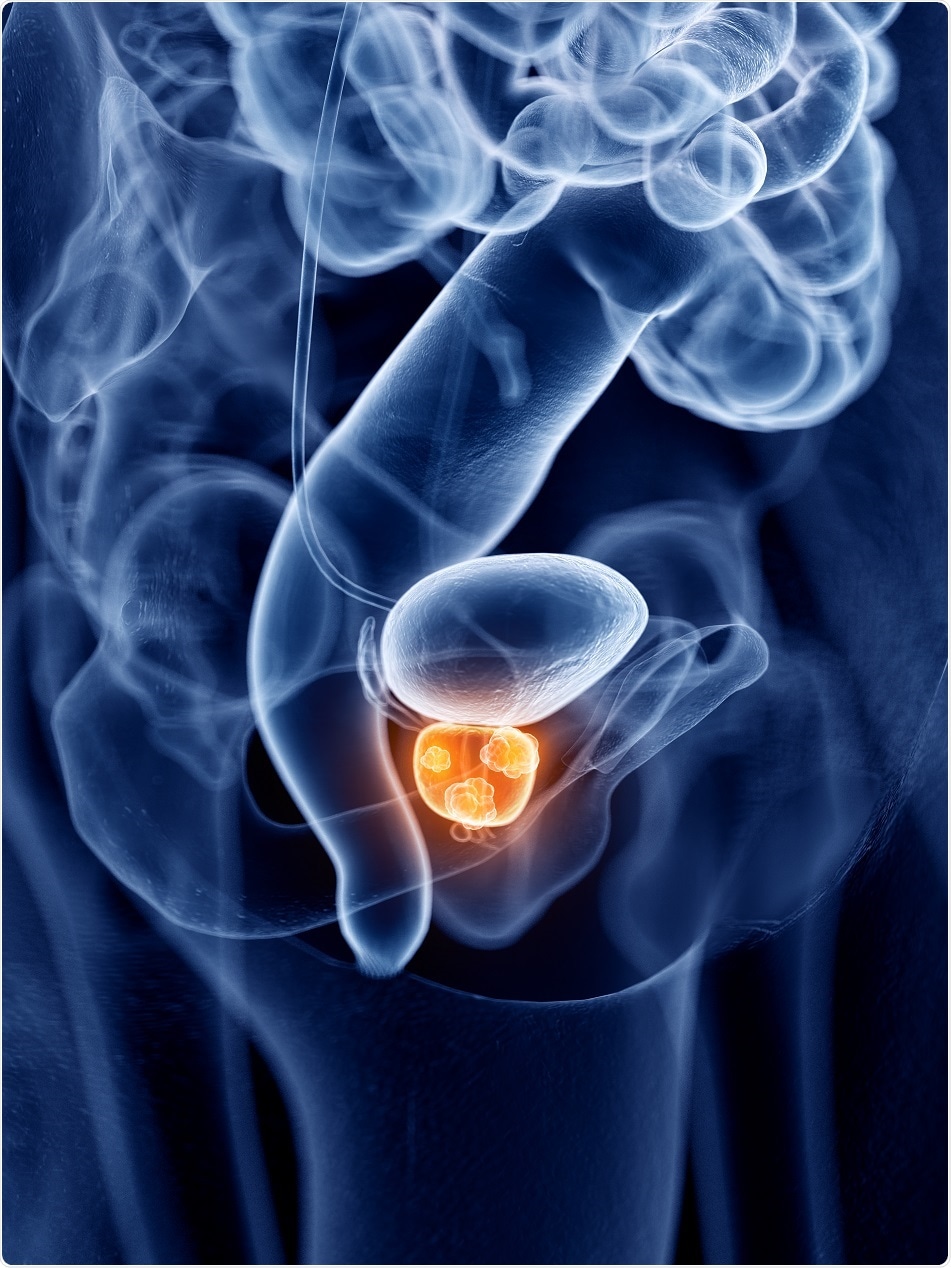Scientists have proposed a new approach to preventing the proliferation of prostate tumor cells that are no longer responding to treatment. Prostate cancer can usually be cured via surgical removal of the tumor and/or the use of radiotherapy, but in one-fifth of cases, patients also require treatment with drugs to continue removing tumor cells. However, these drugs are only effective for up to three years, after which the cancer continues to develop.
 Credit: Sebastian Kaulitzki/ Shutterstock.com
Credit: Sebastian Kaulitzki/ Shutterstock.com
Now, scientists from the Institute of Research in Biomedicine (IBR), Barcelona have found a new way to target drug-resistant prostate tumor cells.
These cells depend on highly active androgen receptor protein to survive and proliferate. The drugs used to remove the cells block the activity of this protein by binding to a specific region of the receptor. However, the protein eventually mutates and treatment with these drugs becomes futile because the binding region is in fact no longer there.
In the current study, Xavier Salvatella and colleagues have described a small region of the protein known to be important to tumor cell survival. They found that this region, which usually has no structure and is therefore not considered a drug target, adopts a helix shape. When it does this, another protein called TFIIF binds to it, and Salvatella and colleagues have shown that it is this interaction that stimulates the androgen receptor activity.
As reported in Structure, the team have now added the TFIIF protein to this small protein region, which spans only 20 amino acids, as a potential treatment target.
The fact that TFIIF is a folded protein with a more defined structure makes it easier to search for drugs that can interfere with its interaction with the motif. For prostate tumour cells that have become resistant to treatment, we believe that this interaction could be their last mechanism through which to survive and proliferate.”
Xavier Salvatella, Institute of Research in Biomedicine (IBR), Barcelona
In vitro studies showed that when the region was removed, the TFIIF protein failed to bind to the androgen receptor, meaning the interaction does not occur and the receptor loses its activity.
Now, the IRB team are working with computational modelling experts to find drugs that interfere with TFIIF. "We don't know whether such drugs will have a positive effect on cells, but the data available is promising," says Salvatella.